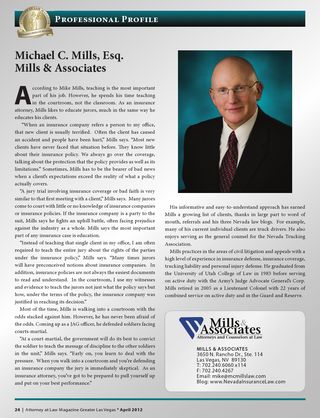 In civil cases, a Nevada Plaintiff has the burden of proof. But what standard of proof must that Plaintiff meet to prevail? In a civil case, the standard of proof in Nevada is “by a preponderance of evidence”.
In civil cases, a Nevada Plaintiff has the burden of proof. But what standard of proof must that Plaintiff meet to prevail? In a civil case, the standard of proof in Nevada is “by a preponderance of evidence”.
The case of Deiss v. S. Pac. Co., 56 Nev. 169, 53 P.2d 332 (1936) provides a great explanation as to what it means to prove something “by a preponderance of evidence”.
This case involves a crash between a car and a train. The jury found in favor of the deceased driver’s estate and widow. The railroad appealed.
The best explanation of the facts is found in Deiss v. S. Pac. Co., 56 Nev. 151, 47 P.2d 928 (1935). The accident happened in Winnemucca. For some reason, the deceased drove his car in front of the train. But the impact didn’t kill him. Witnesses said that the driver was alive in his car as it was carried on the pilot (cowcatcher) down the tracks. The train came to a stop 1,287 feet from the point of impact. As he was being removed from his car, his hand was out the window and he was still grasping onto one of the metal bars of the pilot. His grasp was so strong his hand had to be pried loose. His eyes looked wild but the only physical injuries that could be found were a slight scalp wound and a slight right leg wound. Nothing that could have caused his death. The doctors opined his death was a result of “profound shock”.
The widow argued that if the train engineer had been paying more attention, he could have brought the train to a stop sooner and thus her husband could have survived the crash. The Nevada Supreme Court upheld the jury’s verdict in favor of the widow.
The discussion about a “preponderance of evidence” is found in the opinion denying the rehearing. The Court said:
In ordinary civil actions a fact in issue is sufficiently proved by a preponderance of evidence, and the verdict or finding should be based upon the preponderance of the evidence, whether the evidence is direct or circumstantial. Under this rule, a party is not required to prove his case ‘beyond a reasonable doubt,’ ‘beyond doubt,’ ‘beyond any doubt,’ ‘beyond dispute,’ ‘beyond question,’ ‘conclusively,’ ‘to a certainty,’ or a ‘moral,’ ‘reasonable,’ or ‘absolute’ certainty, ‘to the satisfaction of the jury,’ or by evidence which is ‘clear and conclusive,’ ‘clear and satisfactory,’ ‘clear and unequivocal,’ ‘positive and conclusive,’ or such as to ‘satisfy’ the jury, or ‘exclude the truth of any other theory.’
Deiss v. S. Pac. Co., 56 Nev. 169, 178, 53 P.2d 332, 336 (1936). The Court quoted a jury instruction from a Michigan case. The instruction read:
The burden of proof rests upon the plaintiff to make out the facts which I have stated to you are essential to establish his case by a fair preponderance of evidence. By this is meant such evidence as, when weighed with that which is offered to oppose it, has more convincing power in the minds of the jury. It is not a technical term at all, but means simply that evidence which outweighs that which is offered to oppose it. It does not necessarily mean that a greater number of witnesses shall be produced on the one side or the other, but that, upon the whole evidence, the jury believe the greater probability of the truth to be upon the side of the party having the affirmative of the issue.’
Id. at 177-78, 53 P.2d at 335-36.
If you have questions about Nevada Coverage Law or Insurance Law in Nevada, please contact Mike Mills at 702.240.6060×114 or email him at mmills@blwmlawfirm.com.
 Follow
Follow Email
Email


